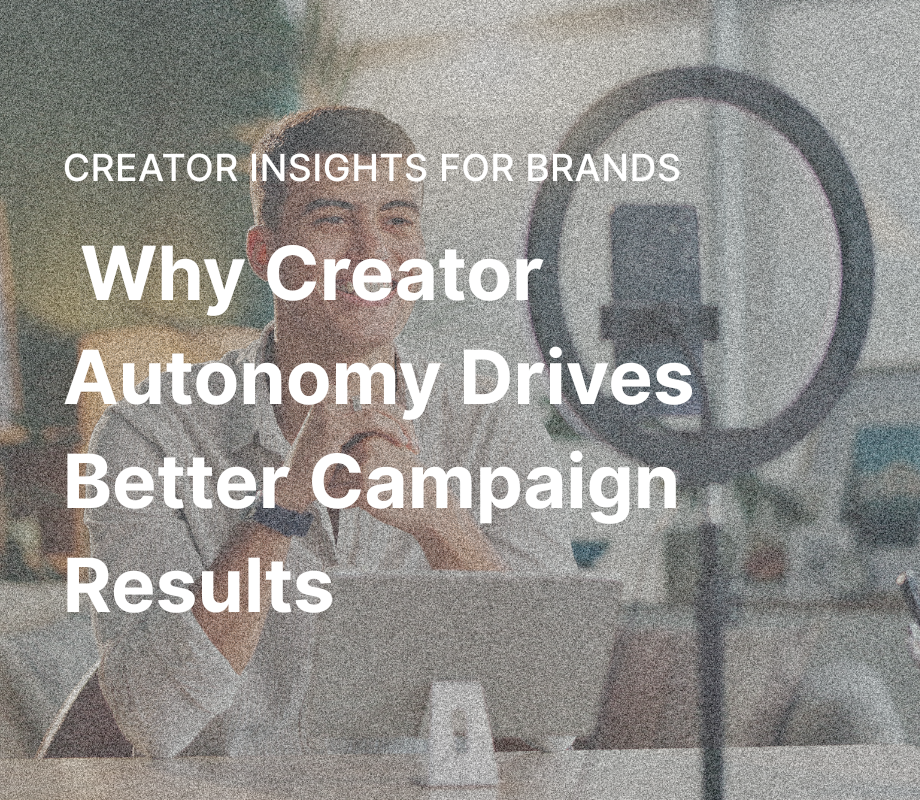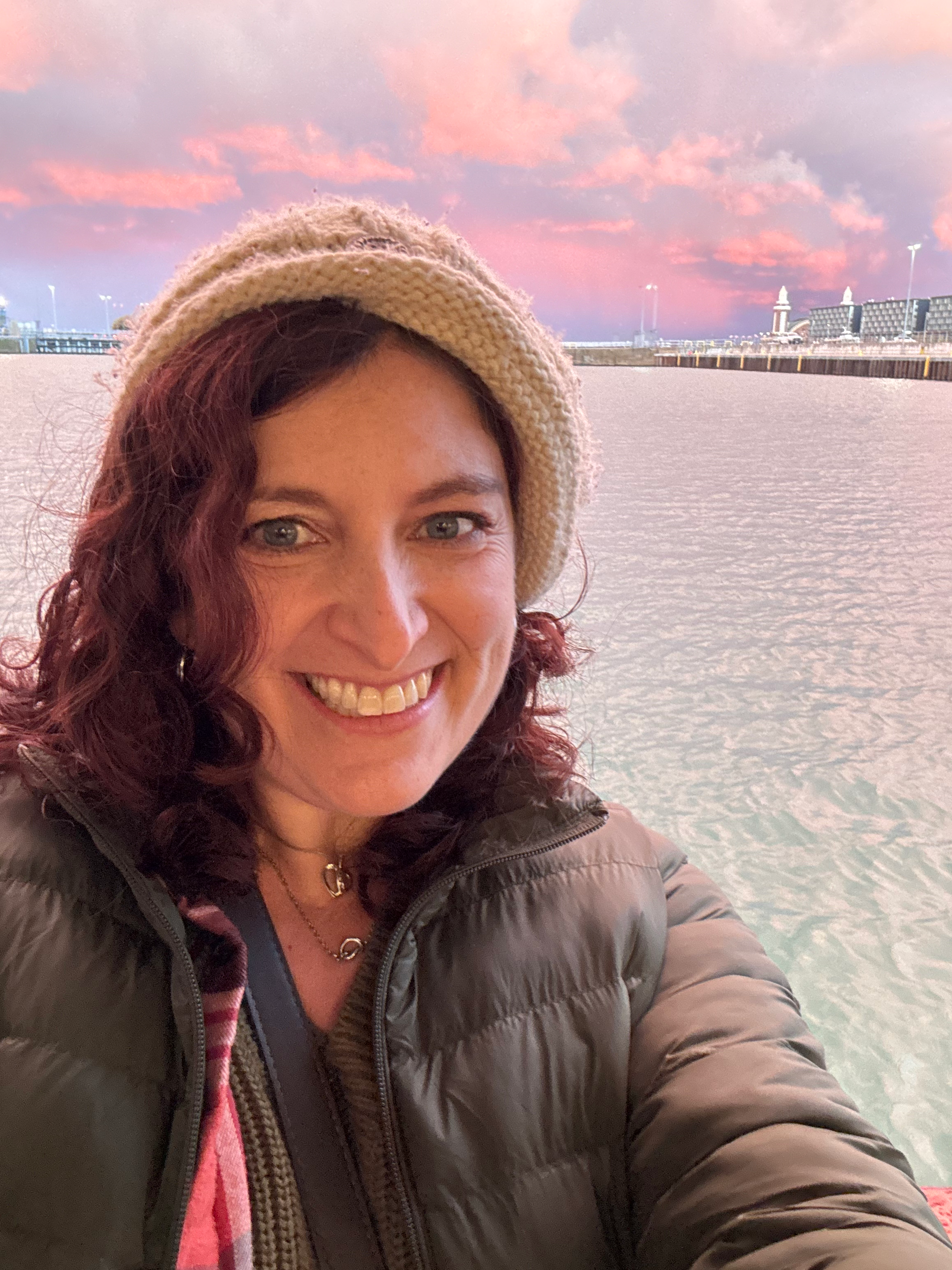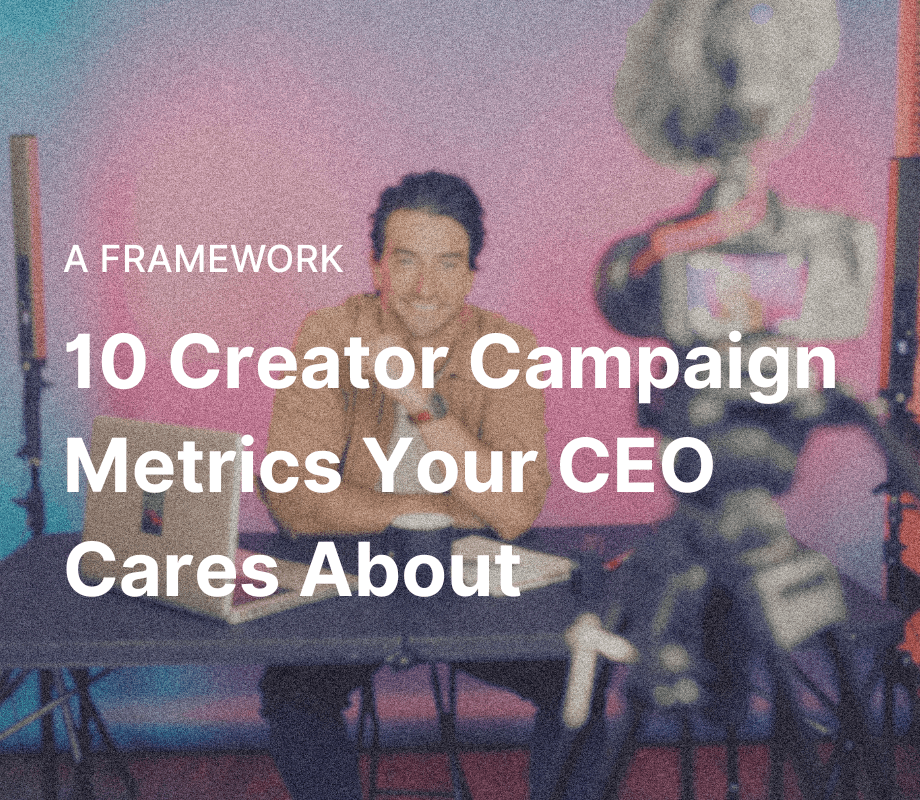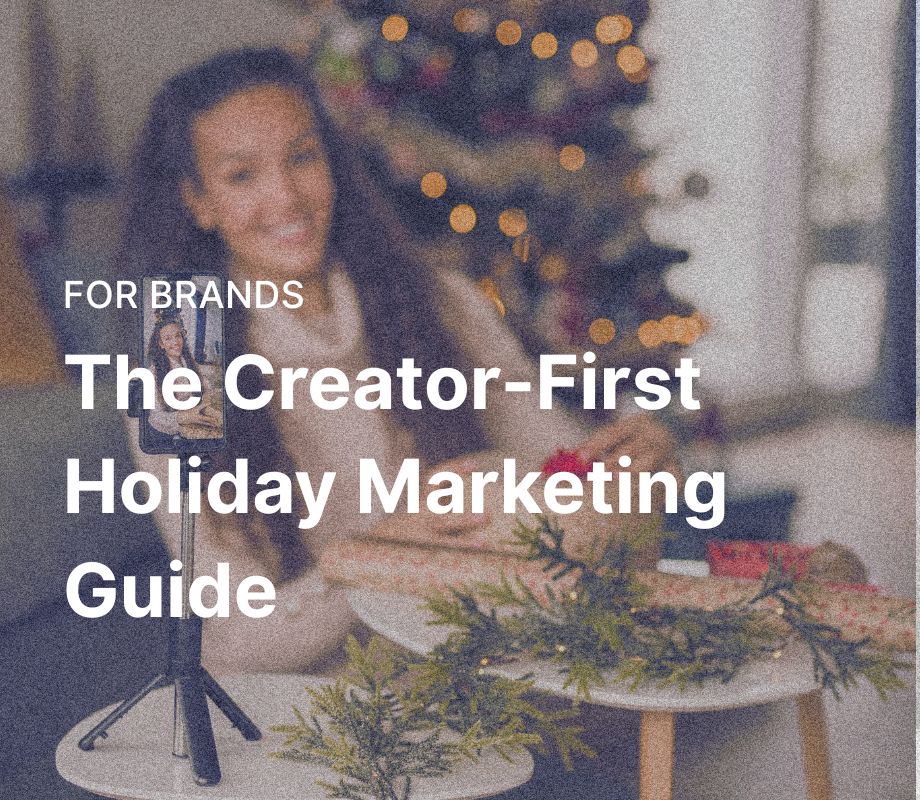TL;DR:
Only 10% of creators feel they have true creative control in brand partnerships, while 53% actively want more freedom.
This creative control gap damages campaign performance, creator retention, and long-term partnership value.
The disconnect stems from misaligned priorities: brands optimize for control while creators need strategic guidance paired with autonomy.
Later Influence bridges this gap with tools that enable authentic collaboration at scale.
Table of Contents
Brands spend billions annually on creator partnerships, chasing the one thing traditional advertising cannot manufacture: authenticity. Yet the data reveals a troubling paradox. Only 10% of creators report feeling they have genuine creative control over the content they produce for brand partnerships. Even more telling, 53% of creators actively want more freedom in their brand collaborations, signaling a fundamental misalignment between what brands say they value and what they actually enable.
This misalignment creates a performance problem that extends far beyond creator satisfaction. When creators feel constrained, audiences sense it immediately, and the very authenticity brands are paying for gets diluted in approval processes and rigid guidelines.
The creative control gap: by the numbers
The scale of this problem becomes clear when you examine how both sides experience collaboration:
What creators are experiencing:
34% of creators feel they have little to no influence in shaping campaigns
53% of creators cite clear briefs as critical, yet also demand creative freedom
30% say insufficient compensation is their top challenge
30% cite late outreach as a major barrier
Only 8% maintain recurring brand relationships during the holiday season
What brands believe:
41% of brands report creators "somewhat" shape campaigns
52% cite creator-brand alignment as their top priority
51% consider early planning critical to success
Yet 31% reuse the same creators annually—a massive gap from the 8% creator retention rate
This perception gap reveals that while brands think they're collaborating, creators feel constrained.

What this disconnect is costing you
The creative control gap damages three critical areas of campaign performance:
1. Immediate performance
When creators feel micromanaged, they bring less creative energy to projects. The content becomes a checkbox to complete rather than an opportunity to create something genuinely compelling. During the holiday season when consumers are already overwhelmed with promotional content, scripted creator content gets scrolled past while authentic recommendations break through.
2. Creator retention
While 31% of brands reuse the same influencers annually, only 8% of creators maintain recurring brand relationships. This 23-point gap suggests creators are declining to work with brands again—not because of payment, but because partnerships feel transactional rather than collaborative.
3. Access to top talent
Seventy-eight percent of brands prefer working with micro and mid-tier influencers, and 82% of Later creators fall into the nano and micro tiers. In this competitive environment, brands with reputations for micromanagement find themselves with access to fewer quality creators. The best creators—those with the most engaged audiences—are the ones most likely to decline partnerships that feel restrictive.
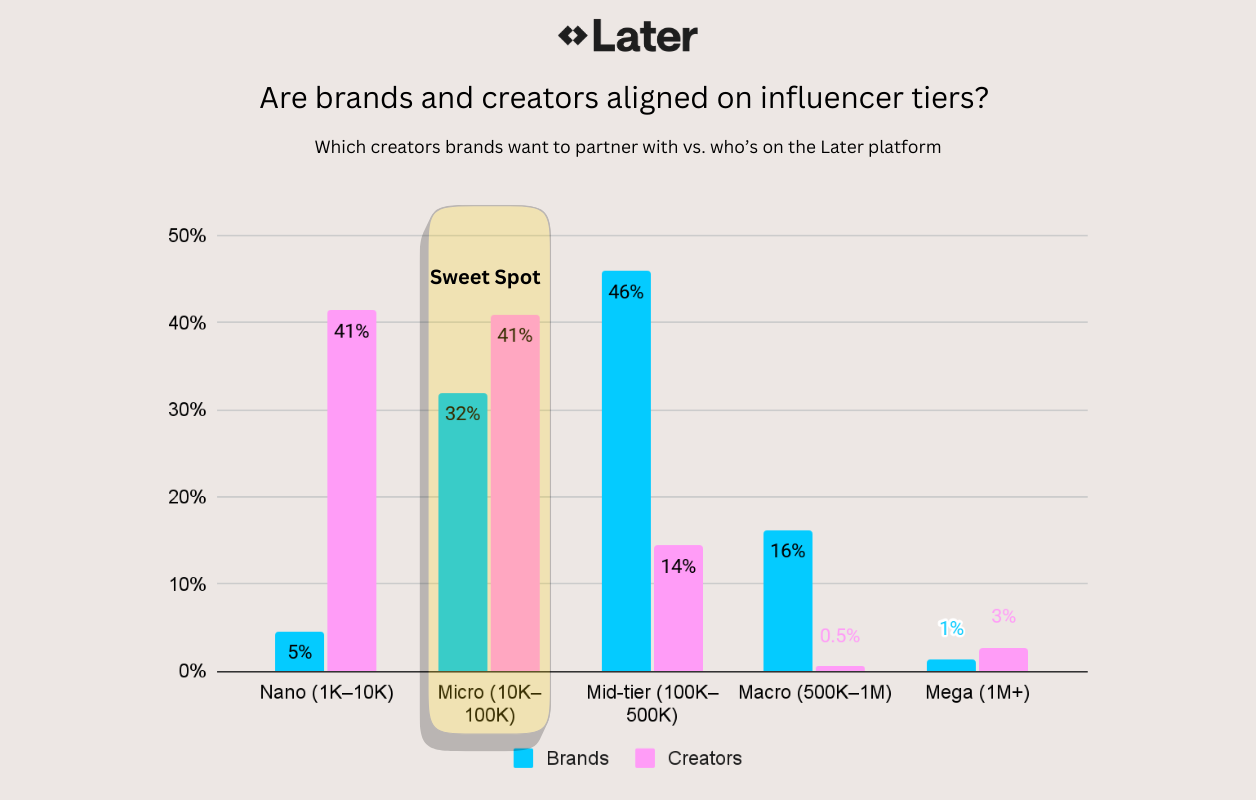
Why the gap exists
The disconnect stems from fundamentally different optimization goals:
Brands optimize for: Consistency, compliance, control, measurable ROI, and multi-stakeholder approval processes.
Creators optimize for: Authenticity, audience resonance, creative expression, and maintaining the trust they've built with their followers.
Both perspectives are valid, but most brands lack the infrastructure to balance these needs effectively. Briefs conflate non-negotiables with preferences, approval processes strip personality from content, and feedback focuses on execution details rather than strategic alignment. This can result in partnerships that satisfy neither party particularly well.
Where alignment exists
Despite the control gap, brands and creators do agree on several critical success factors:
Both prioritize creator-brand alignment: 52% of brands and 50% of creators cite this as essential. The challenge is achieving it without heavy-handed control.
Both value clear communication: 53% of creators want detailed briefs, and 41% of brands emphasize strong creative briefs. The disconnect is in execution—creators want strategic clarity, not creative prescription.
Both care about timing: 51% of brands cite early planning as critical, and creators prefer 1-2 months of lead time. Yet 30% of creators still cite late outreach as their biggest challenge.
These alignment points reveal opportunity. When brands and creators share priorities, the missing piece is infrastructure that enables collaboration at scale.
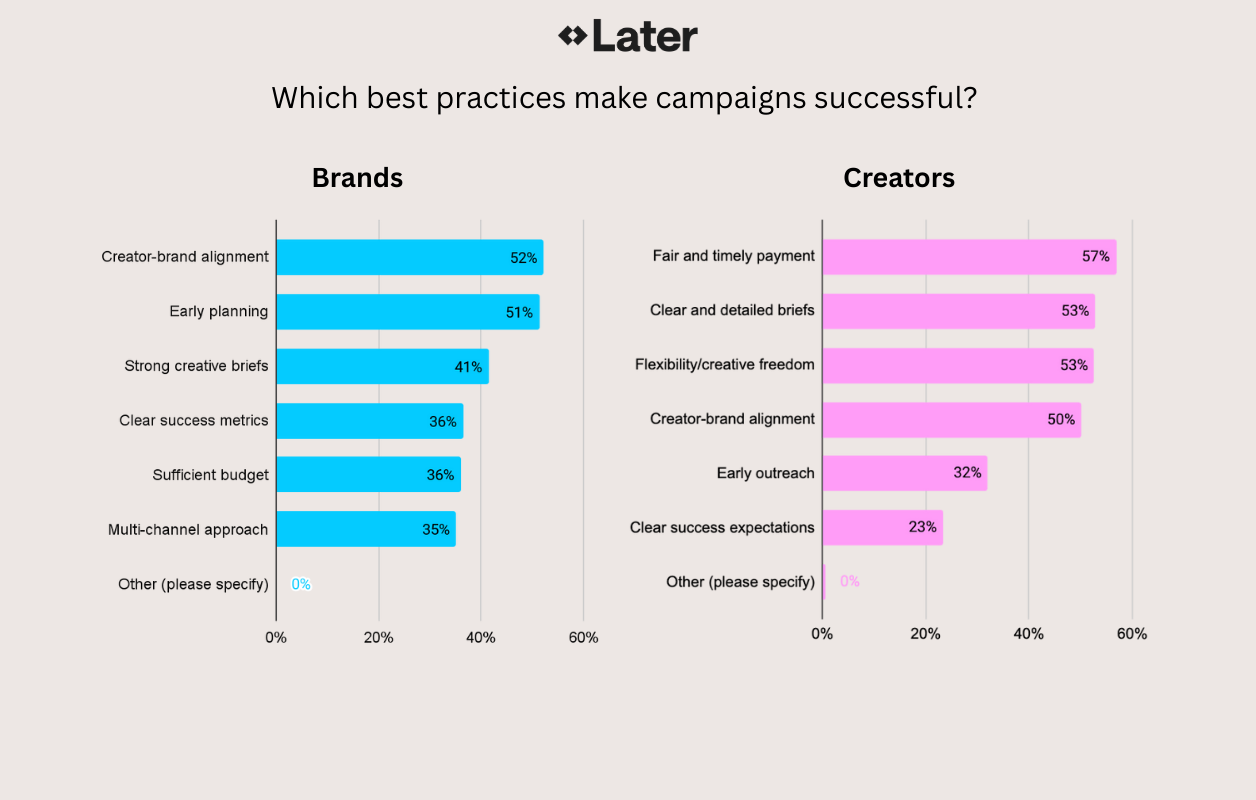
How Later bridges the gap
The creative control problem requires expert services and technology that balances brand needs with creator autonomy. Later provides three critical capabilities:
Intelligent creator matching. Later EdgeAI and Brand Suitability features analyze both brand objectives and creator content style to identify partnerships with genuine alignment from the start. When you work with creators whose authentic style already resonates with your brand values, you need far less creative control. The foundation of authentic collaboration is choosing the right partners.
Structured collaboration frameworks. Brief management tools help you communicate strategic direction without dictating creative execution. Templates separate non-negotiables from preferences, ensuring creators understand guardrails while having freedom within parameters. Communication features enable the dialogue necessary for co-creation: creators can ask questions, suggest modifications, and flag disconnects before production begins.
Shared performance visibility. Analytics provide both brands and creators with visibility into what drives results. When both parties can see how creative approaches impact engagement and conversions, decision-making becomes objective rather than subjective. This shared understanding builds trust and improves outcomes over time.
The path forward
As the creator economy matures, the brands that will win are those who solve the creative control paradox: maintaining strategic oversight while enabling authentic creator expression. Success requires infrastructure that makes both brand consistency and creator freedom possible simultaneously.
The data is clear: 53% of creators want more freedom, and only 8% maintain recurring brand relationships. Creative constraints aren't protecting your brand—they're limiting your access to talent and undermining the authenticity you're paying for.
The question is whether you have the systems to enable authentic collaboration at scale. Because the alternative—continuing to micromanage creator partnerships while watching your creator retention rate remain in the single digits—isn't sustainable.
Ready to enable creative freedom that drives results? Book a call with Later to see how our platform helps you build more collaborative, high-performing creator partnerships.
Methodology
This research is based on dual surveys conducted in October 2025: an internal survey of 403 creators from Later's Influence Database and an external survey through Centiment of 222 qualified brands (running holiday campaigns, conducting influencer marketing, with $5M+ in annual revenue). At 95% confidence, creator statistics have a ±4.9% margin of error, and brand statistics have a ±6.6% margin of error.
